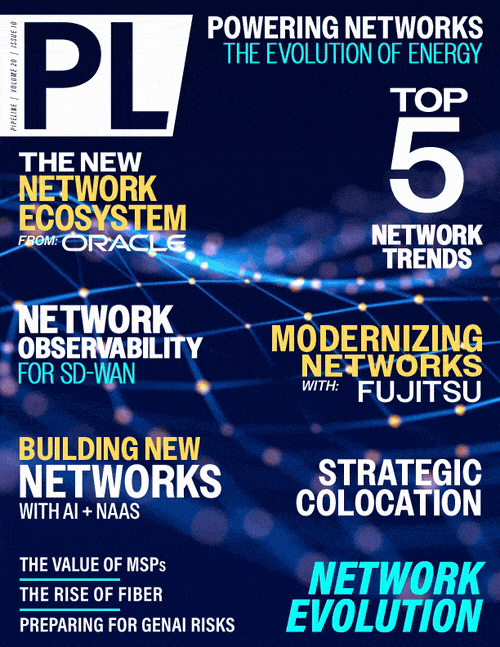Five Tech & Network Megatrends
That Will Shape the Future
There are many existing applications of XR across customer support, training, collaboration, rapid prototyping, technician support, and research and development. To name just a few specific examples, XR allows for spatial visualization, real-time remote assistance, the simulation of complex scenarios for hands-on training, and the creation of interactive 3D models that speed up design iterations. The Metaverse is perhaps the most prominent consumer case.
A variety of enterprise-focused products, such as Google Proto — just one instance of a holographic device — are already commercially available. Gridraster offers immersive AR training environments that use spatial computing for interaction with overlaid digital content in the physical world. Similarly, the NASA JSC Virtual Reality Lab (VRL) provides simulation-based extravehicular activity (EVA) and robotics operation training to astronauts. Gridraster has also pioneered XR and AI combined tech — called immersive intelligence — for manufacturing and engineering error identification and task planning, among other applications.
It’s important to see XR devices in a broader IoT context. The sensors, environments, and wearable devices on which XR relies require advanced infrastructure, connectivity, and can be enhanced with AI. For technology and network providers, the focus should be on out-of-the-box interoperable solutions for IoT integration and model content distribution, along with necessary high-speed and low-latency connectivity. For enterprises, the opportunity is to strengthen vast swathes of day-to-day operations through the blending of the virtual and physical worlds. Imagine an entire enterprise that can be visualized virtually with integrated data, intelligence, automation, and communications built in (to be covered in the upcoming, December issue of Pipeline).
Trend 5: Social-Ethical Frameworks
Touching on the device, security and compliance layers, the social and regulatory implication must be considered. Views on robot rights are mixed. Yet this hasn’t prevented murmurings from legislative bodies about the possibility of rights-based regulations, with the European Parliament discussing the (admittedly tentative) idea of “electronic personhood.” There are also serious ethical discussions about the possibility living brain organoid computers becoming sentient. But that hasn't stopped others, like Saudi Arabia who was the first to grant citizenship to a robot, Sophia in 2017.
More immediately, the European Union’s (EU) Artificial Intelligence (AI) Act took effect on August 1, 2024. It either wholly or partially bans certain AI applications like social scoring, predictive policing, and real-time biometric identification in public spaces. This is likely just the beginning of wide reaching regulation that has to find a delicate (and slow moving) balance between protection and innovation. But compliance will be a key consideration for all innovators.
The point here is that regulatory frameworks will set the overarching scope of technological evolution, or at least contribute in a significant way. A web of regulation needs to be contented and complied with. Providers must account for it. The maelstrom of actual and proposed legislation — from an “AI Bill of Rights” to pressure to ban killer robots — will only continue to grow fiercer over time. For example, Israel's use of its AI called "The Gospel" in the war in Gaza has caused the death of non-combatants causing backlash and condemnation all the way up to the United Nations.
Regulation can and does stifle innovation, but unbridled technology can have more dire consequences. Even world-renown innovator Elon Musk has sounded the alarm for increased regulation over AI. Failure to comply with the increasing web of regulation is becoming more treacherous with hefty fines ever-looming, especially where mission-critical infrastructure is involved. For consumers and businesses, data protection is also paramount. Compliance isn't an option, it's a necessity. What’s more, security is an all-encompassing vertical layer that must be incorporated across in the entire innovation stack.
Companies must able to navigate complex regulatory framework and ethical considerations to drive true innovation and succeed. Legislation is emerging quickly, so enterprises need to be ahead of the curve (making tweaks as more information becomes available). Similarly, ethics will likely become a crucial part of value propositions at both the corporate and consumer levels. Within the constraints of regulation, social evolution is largely in the hands of the enterprise.
Embracing the Innovation Stack
To thrive in the coming decades, providers and enterprises must embrace an intricate and multifaceted innovation stack. They also need to commit to navigating regulatory and ethical constraints in a way that doesn’t stifle transformation.
The innovation stack is the lens by which you can see and prepare for the future. It is the basis for making technology decisions that will pay significant dividends. For the service provider, this means bundling integrated connectivity packages that cater to complex enterprise requirements. For the technology developer, it is about building each layer of the stack and determining where they fit within it, all while keeping the broad scope of change in mind. For the consumer-facing enterprise, the task is to manage the shift to full autonomy and create new offerings on top of the stack.
The fully autonomous enterprise will drive mass use cases. It is impossible to say exactly what the world will look like in the future, but it will be a vastly different place to the world of today. Change is already noticeable and underway. And it’s gaining traction at an exponential rate.
Networks of connected devices are communicating and working together at ever-increasing speeds, and they will soon be components of a ubiquitous network extending beyond the planet. XR will bridge the physical and digital worlds, with governments and regulatory bodies shaping the direction of technological evolution. There has never been a more profound opportunity for innovation in human history, and now is the time to prepare.



















